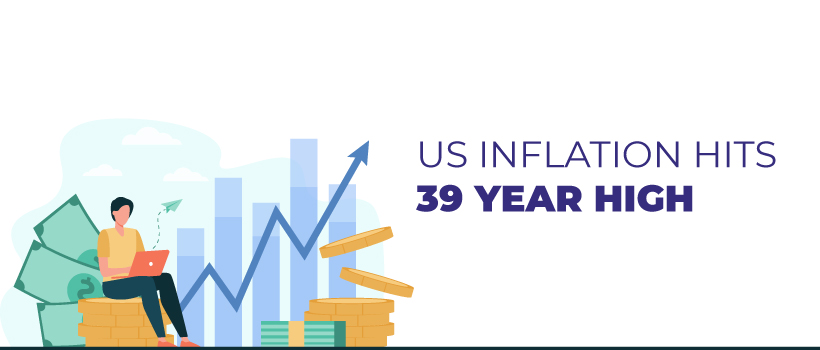India Inflation Edges Higher, US Inflation at 39-Year High

Last Updated: 8th August 2022 - 06:59 pm
It was a day when inflation hogged the headlines. Let us talk about the Indian inflation first and come to US inflation later. For Dec-21, CPI inflation at 5.59% was 58 bps higher than Nov-21. Reuters had estimated Dec-21 inflation around these levels. Inflation number got magnified due to the base; as inflation had fallen from 6.93% in Nov-20 to 4.59% in Dec-20.
The big trigger for the higher headline inflation in Dec-21 was food inflation, which showed 218 bps accretion from 1.87% to 4.05%. Food inflation has been consistently higher in last 3 months. Fuel inflation and transport inflation tapered to 10.95% and 9.65% respectively but are still high by absolute standards. Cuts in GST and VAT did temper fuel inflation, but crude is once again at $84/bbl.
Core inflation is the residual inflation after food and oil is removed. Core inflation stayed above 6% for the third month in succession and it has now been above 6% in six out of the last nine months. Core inflation is always a cause of structural concern as it is relatively stickier. In the last Economic Survey, the finance minister had pointed to the urgency of bringing core inflation under control. However, not much has changed.
It was food that really contributed to the overall inflation spike. The Rabi and Kharif are showing good indications but supply chain constraints are really pinching prices. Input costs from seeds to fertilizers to agrochemicals have gone up sharply. This may coax the RBI to look at rates more closely in the Feb-22 policy, although weak IIP may still be a concern.
US inflation touches 39-month high of 7% in Dec-21
Indians are looking at US inflation closely for the first time. The US last saw such high levels of inflation in 1982, which is called the Paul Volcker era, after the then FED chairperson. However, markets reacted positively as the markets were expecting inflation at closer to 7.1%. Even the 10-year treasury yields fell in the US markets.
This reiterates the expectation that the US will complete the taper in March and start rate hikes immediately after that. It also underlines the view that the US FED may eventually settle for 4 rate hikes of 25 bps each instead of 3 rate hikes. The idea will be to front-end the rate hikes so that maximum impact will be derived on tempering the inflation in the US.
With reference to India, the higher inflation at 5.59% and lower IIP growth at 1.42% has created a quandary for the RBI. They may prefer to wait out February policy with a status quo and take a final call only in the April policy, after watching the impact of the FED policy announcements on FED rates in March 2022.
Also Read:-
- Flat ₹20 Brokerage
- Next-gen Trading
- Advance Charting
- Actionable Ideas
Trending on 5paisa
Indian Stock Market Related Articles
Disclaimer: Investment in securities market are subject to market risks, read all the related documents carefully before investing. For detailed disclaimer please Click here.
 5paisa Research Team
5paisa Research Team
 Sachin Gupta
Sachin Gupta




